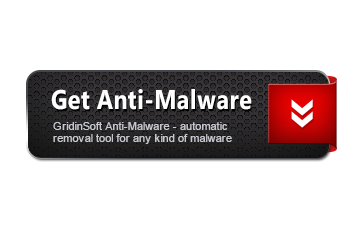The Trojan.AutoIt.Skeeyah.A is considered dangerous by lots of security experts. When this infection is active, you may notice unwanted processes in Task Manager list. In this case, it is adviced to scan your computer with GridinSoft Anti-Malware.

Gridinsoft Anti-Malware
Removing PC viruses manually may take hours and may damage your PC in the process. We recommend using GridinSoft Anti-Malware for virus removal. Allows to complete scan and cure your PC during the trial period.
What Trojan.AutoIt.Skeeyah.A virus can do?
- SetUnhandledExceptionFilter detected (possible anti-debug)
- Behavioural detection: Executable code extraction – unpacking
- Yara rule detections observed from a process memory dump/dropped files/CAPE
- Creates RWX memory
- Anomalous file deletion behavior detected (10+)
- Guard pages use detected – possible anti-debugging.
- A process attempted to delay the analysis task.
- Dynamic (imported) function loading detected
- At least one IP Address, Domain, or File Name was found in a crypto call
- Performs HTTP requests potentially not found in PCAP.
- Reads data out of its own binary image
- A process created a hidden window
- CAPE extracted potentially suspicious content
- The binary likely contains encrypted or compressed data.
- Authenticode signature is invalid
- Uses Windows utilities for basic functionality
- Behavioural detection: Injection (Process Hollowing)
- Executed a process and injected code into it, probably while unpacking
- Attempts to remove evidence of file being downloaded from the Internet
- Behavioural detection: Injection (inter-process)
- Behavioural detection: Injection with CreateRemoteThread in a remote process
- Behavioural detection: Transacted Hollowing
- Installs itself for autorun at Windows startup
- Exhibits behavior characteristic of Nanocore RAT
- Creates a hidden or system file
- Attempts to bypass application whitelisting by copying and persisting .NET utility
- Attempts to bypass application whitelisting by executing .NET utility in a suspended state, potentially for injection
- CAPE detected the NanoCore malware family
- Detects Bochs through the presence of a registry key
- Creates a copy of itself
- Collects information to fingerprint the system
How to determine Trojan.AutoIt.Skeeyah.A?
File Info:
name: 26212810DA48597FE24D.mlwpath: /opt/CAPEv2/storage/binaries/cf35eb223ba04ca9e20b8cba71def6f0a813547dddb44f38ca7167432eb47d5dcrc32: 2A35B061md5: 26212810da48597fe24dacabed22d445sha1: c507783af4115b2cc918efa52ae3981ac96bcf5csha256: cf35eb223ba04ca9e20b8cba71def6f0a813547dddb44f38ca7167432eb47d5dsha512: f748008628948344d4daaf84a34332bed8f77424f0e94ec517a885ee3aef8ffa2d032dc4c636e764db137064a10fc93ad2fd8db78bfd3a698aeb4bfcd2e8c666ssdeep: 24576:lAHnh+eWsN3skA4RV1Hom2KXMmHa8yR4M9vV1le3rgdMeUu/8CBs295:Uh+ZkldoPK8Ya8yR4WvZekCeUHstype: PE32 executable (GUI) Intel 80386, for MS Windowstlsh: T11D75DF0273E6C032FFAB92739B69F64156BC79254123852F13982DB9BC701B2267D763sha3_384: 496e66c759546c8018fbf5fe4db481837defec98c50db67a3c196f11d50b34bbf7d430e08e605b2b91c00dfbf203d2f1ep_bytes: e8c8d00000e97ffeffffcccccccccccctimestamp: 2020-02-22 00:50:13Version Info:
Translation: 0x0809 0x04b0
Trojan.AutoIt.Skeeyah.A also known as:
| Bkav | W32.AIDetect.malware1 |
| Lionic | Hacktool.Win32.Gamehack.3!e |
| MicroWorld-eScan | Trojan.GenericKD.33357926 |
| FireEye | Generic.mg.26212810da48597f |
| CAT-QuickHeal | Trojan.AutoIt.Skeeyah.A |
| ALYac | Trojan.GenericKD.33357926 |
| Cylance | Unsafe |
| Sangfor | Virus.Win32.Save.a |
| K7AntiVirus | Trojan ( 005604901 ) |
| Alibaba | Trojan:Win32/AutoitU.ali2000008 |
| K7GW | Trojan ( 005604901 ) |
| Cybereason | malicious.0da485 |
| Cyren | W32/AutoIt.QG.gen!Eldorado |
| Symantec | Trojan.Nancrat |
| Elastic | malicious (high confidence) |
| ESET-NOD32 | a variant of Win32/Injector.Autoit.FBO |
| APEX | Malicious |
| Avast | Script:SNH-gen [Trj] |
| Kaspersky | UDS:Trojan.Script.Generic |
| BitDefender | Trojan.GenericKD.33357926 |
| NANO-Antivirus | Trojan.Win32.Stealer.hbsogg |
| Rising | Trojan.Obfus/Autoit!1.C27D (CLASSIC) |
| Ad-Aware | Trojan.GenericKD.33357926 |
| Sophos | Mal/Generic-S |
| DrWeb | Trojan.PWS.Stealer.25676 |
| TrendMicro | Backdoor.AutoIt.BLADABINDI.AH |
| McAfee-GW-Edition | BehavesLike.Win32.Generic.tc |
| Emsisoft | Trojan.GenericKD.33357926 (B) |
| Avira | HEUR/AGEN.1245795 |
| Microsoft | Backdoor:Win32/Bladabindi!ml |
| ZoneAlarm | UDS:Trojan.Script.Generic |
| GData | Trojan.GenericKD.33357926 |
| Cynet | Malicious (score: 100) |
| McAfee | Artemis!26212810DA48 |
| MAX | malware (ai score=87) |
| VBA32 | Trojan.Autoit.F |
| Malwarebytes | Spyware.AgentTesla.AutoIt |
| TrendMicro-HouseCall | Backdoor.AutoIt.BLADABINDI.AH |
| Tencent | Win32.Trojan.Generic.Hoyb |
| MaxSecure | Trojan.Malware.1726719.susgen |
| Fortinet | AutoIt/Injector.FBO!tr |
| AVG | Script:SNH-gen [Trj] |
| Paloalto | generic.ml |
| CrowdStrike | win/malicious_confidence_100% (W) |
How to remove Trojan.AutoIt.Skeeyah.A?
- Download and install GridinSoft Anti-Malware.
- Open GridinSoft Anti-Malware and perform a “Standard scan“.
- “Move to quarantine” all items.
- Open “Tools” tab – Press “Reset Browser Settings“.
- Select proper browser and options – Click “Reset”.
- Restart your computer.



Leave a Comment